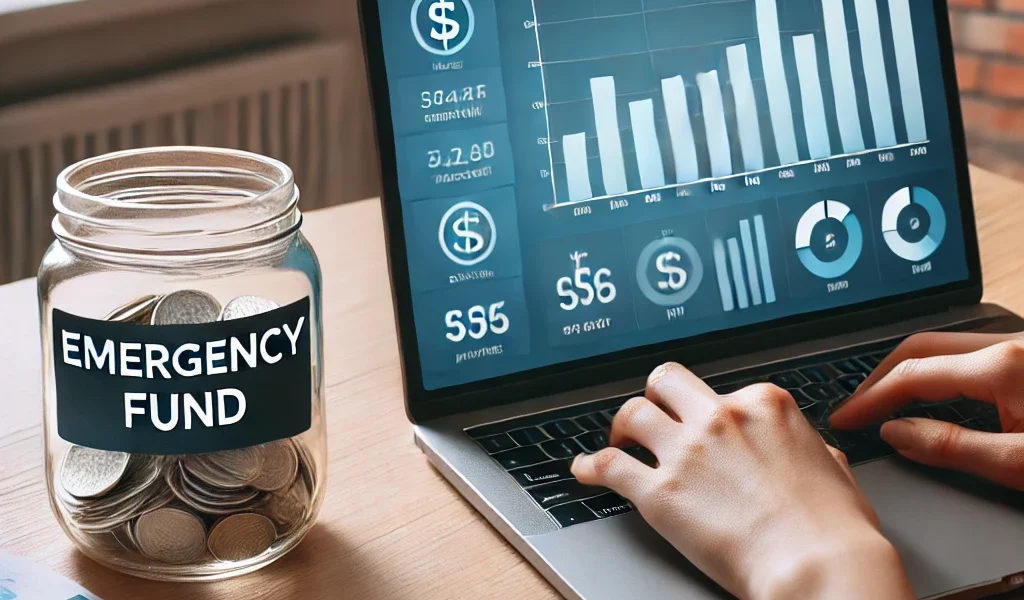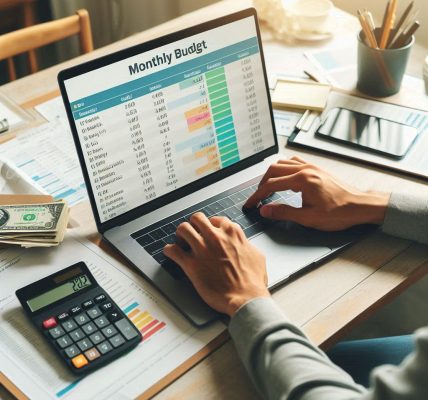Unexpected expenses can arise at any moment — whether it’s a medical emergency, a car breakdown, or sudden job loss. Having an emergency fund can help you avoid going into debt and provide a financial safety net during tough times. However, building an emergency fund while maintaining a strict budget may seem challenging. The good news? With a well-planned approach and discipline, you can build an emergency fund without derailing your budget.
In this guide, we’ll cover:
- Why an emergency fund is essential
- How much you should save
- Practical strategies to build an emergency fund on a budget
- Tips to stay motivated and consistent
- Common mistakes to avoid
Why an Emergency Fund is Essential
An emergency fund serves as a financial cushion that protects you from unexpected expenses without having to rely on credit cards or loans. Here’s why it’s crucial:
- 🏥 Medical Emergencies: Covers unexpected health-related costs not covered by insurance.
- 🚗 Car Repairs: Avoids the stress of sudden vehicle breakdowns.
- 🏡 Home Repairs: Handles unplanned maintenance expenses.
- 💼 Job Loss: Provides financial stability during periods of unemployment.
How Much Should You Save for an Emergency Fund?
Minimum Recommendation
Financial experts suggest saving at least three to six months’ worth of living expenses. However, the exact amount depends on factors such as:
- Monthly essential expenses
- Number of dependents
- Job stability and income consistency
Ideal Savings Amount
- Single Income Household: Aim for 6-12 months’ worth of expenses.
- Dual Income Household: 3-6 months of expenses may suffice.
- High-Risk Profession or Irregular Income: Consider saving 9-12 months’ worth.
Step-by-Step Guide to Building an Emergency Fund While Sticking to Your Budget
Step 1: Set Clear Savings Goals
Define your target amount and set realistic, time-bound goals to build your emergency fund. For example:
- Save $5,000 within 12 months
- Set aside $100 per month toward your emergency fund
🎯 Pro Tip: Break down your goal into smaller milestones to stay motivated.
Step 2: Analyze Your Current Budget
Review your budget to identify areas where you can make small adjustments. Categorize your expenses as:
- Needs: Essential living costs like rent, groceries, and utilities.
- Wants: Discretionary expenses like dining out and entertainment.
- Savings: Contributions toward emergency funds and other financial goals.
Step 3: Identify Areas to Cut Back
Look for non-essential expenses that you can reduce or eliminate temporarily. Some ideas include:
- Limiting dining out to once a month
- Canceling unused subscriptions
- Shopping during sales or using coupons
📉 Pro Tip: Even cutting back by $20-$50 a month can significantly impact your emergency fund over time.
Step 4: Automate Your Savings
Automating your savings ensures consistency and discipline. Set up an automatic transfer to your emergency fund each payday.
- Open a high-yield savings account specifically for your emergency fund.
- Set up direct deposits or recurring transfers from your checking account.
⏰ Pro Tip: Treat your emergency fund contribution like a non-negotiable bill.
Step 5: Utilize Windfalls and Bonuses
Whenever you receive unexpected money — such as a tax refund, work bonus, or gift — allocate a portion toward your emergency fund.
- Aim to allocate at least 50% of windfalls to your emergency fund.
- Use remaining funds for other financial goals or small rewards.
Step 6: Start Small and Increase Gradually
If you’re on a tight budget, start with a small contribution that feels manageable and gradually increase it over time.
- Begin with $20 or $50 per month
- Increase your contribution by 5-10% every 3-6 months
📈 Pro Tip: Even small contributions add up over time, so consistency is key.
Tips to Stay Motivated and Consistent
1. Track Your Progress
Monitor your progress regularly to stay motivated. Use budgeting apps like Mint or YNAB to track your emergency fund contributions.
2. Set Milestone Rewards
Celebrate small milestones by rewarding yourself when you reach certain savings goals.
- $500 milestone: Treat yourself to a movie night.
- $1,000 milestone: Enjoy a nice dinner at home.
3. Visualize Your Goal
Create a visual representation of your progress, such as a chart or graph, to keep your goal top of mind.
4. Involve Your Family
If you’re budgeting as a family, involve your partner and children in the process. Celebrate progress together to maintain enthusiasm.
Common Mistakes to Avoid
1. Dipping into Your Emergency Fund for Non-Emergencies
Avoid using your emergency fund for discretionary expenses or impulse purchases. Clearly define what qualifies as an “emergency.”
2. Failing to Replenish the Fund
If you need to use your emergency fund, prioritize replenishing it as soon as possible.
3. Setting Unrealistic Goals
Don’t overcommit or set overly aggressive savings targets that strain your budget. Start with a manageable amount and build gradually.
4. Neglecting to Review and Adjust
As your income and expenses change, reassess your savings goals and budget to ensure they remain realistic and achievable.
Best Accounts to Keep Your Emergency Fund
1. High-Yield Savings Account
- Offers higher interest rates compared to traditional savings accounts
- Easy access to funds when needed
2. Money Market Account
- Slightly higher returns with check-writing capabilities
- Ideal for short-term savings goals
3. Certificate of Deposit (CD)
- Higher interest rates but requires locking funds for a fixed term
- Suitable for a portion of the emergency fund if you have a larger safety net
Conclusion
Building an emergency fund while sticking to your budget may take time and discipline, but the peace of mind it provides is well worth the effort. By setting realistic goals, automating savings, and making small adjustments to your budget, you can gradually build a solid financial cushion that protects you from unexpected expenses.
Start today, and give yourself the confidence that you’re prepared for whatever life throws your way!



